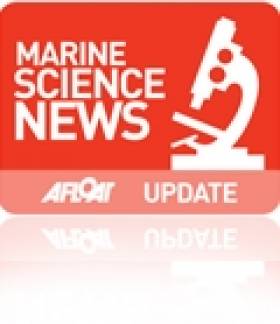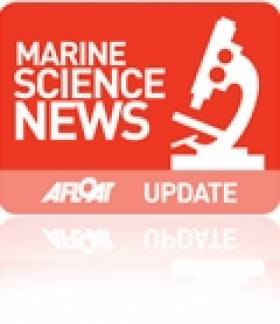Displaying items by tag: Tara Expeditions
#MARINE RESEARCH YACHT– The 36m French marine biology research yacht Tara, skippered by Loic Valette, sailed under motor-power into Dun Laoghaire Harbour from Lorient this afternoon, writes Jehan Ashmore.
The two-master is operated by Tara Expeditions which is a non-profit organisation which aims to learn more about the impact of climate change on ecosystems. She has travelled extensively on expeditions to both poles and throughout the world and where the organsiation have collected samples and data to the scientific community.
The port of call is so that she can take part in the Dublin 'City of Science 2012' festival.
Tara will be moored alongside the harbour's East Pier during tomorrow and Thursday, where the public are invited on board to tour the vessel on a first come first served basis. Opening times on both days are between 1-7pm and taken in small groups, noting limited accessibility. Crew will provide guided tours of the class B aluminium built yacht once owned by Jean-Louis Etienne and Sir Peter Blake. For further details click HERE.
As previously reported, the Marine Institute's RV Celtic Explorer docked in Dublin Port today in advance of the ESOF 2012 conference which is the highlight of the year-long science festival. For information visit www.dublinscience2012.ie
French Scientific Schooner to Visit Dun Laoghaire Harbour
#MARINE SCIENCE TALLSHIP- As part of Dublin City of Science 2012, a 'Science in the City' festival (6-15 July) is to include the French scientific expedition schooner Tara, which is to receive a welcoming flotilla on her arrival to Dun Laoghaire Harbour on 10th July, writes Jehan Ashmore.
At only 36m long, the Tara is unique vessel in that she is used for scientific discovery and adventure purposes, as otherwise most such vessels are larger motorships. The schooner is run by the French based non-profit organisation Tara Expeditions that provides samples and data to the scientific community worldwide.
She has accomplished eight expeditions – to the Antarctica, Arctic, Greenland, Patagonia, southern Georgia and throughout the rest of the world. Before her scientific adventure role she was owned by Jean-Louis Etienne and Sir Peter Blake.
Tara Expeditions aim to learn more about the impact of climate change on ecosystems. One of the core objectives is to increase environmental awareness among the general public, and particularly young people through their Tara Junior outreach programme.
She is to be open to the public at her mooring at the harbour's East Pier where her crew will provide guided tours on the 11th and 12th June. Visits on a first come first served basis (between 11am-6pm) where 3 to 4 groups numbering between 8-12 people will be accommodated.






























































